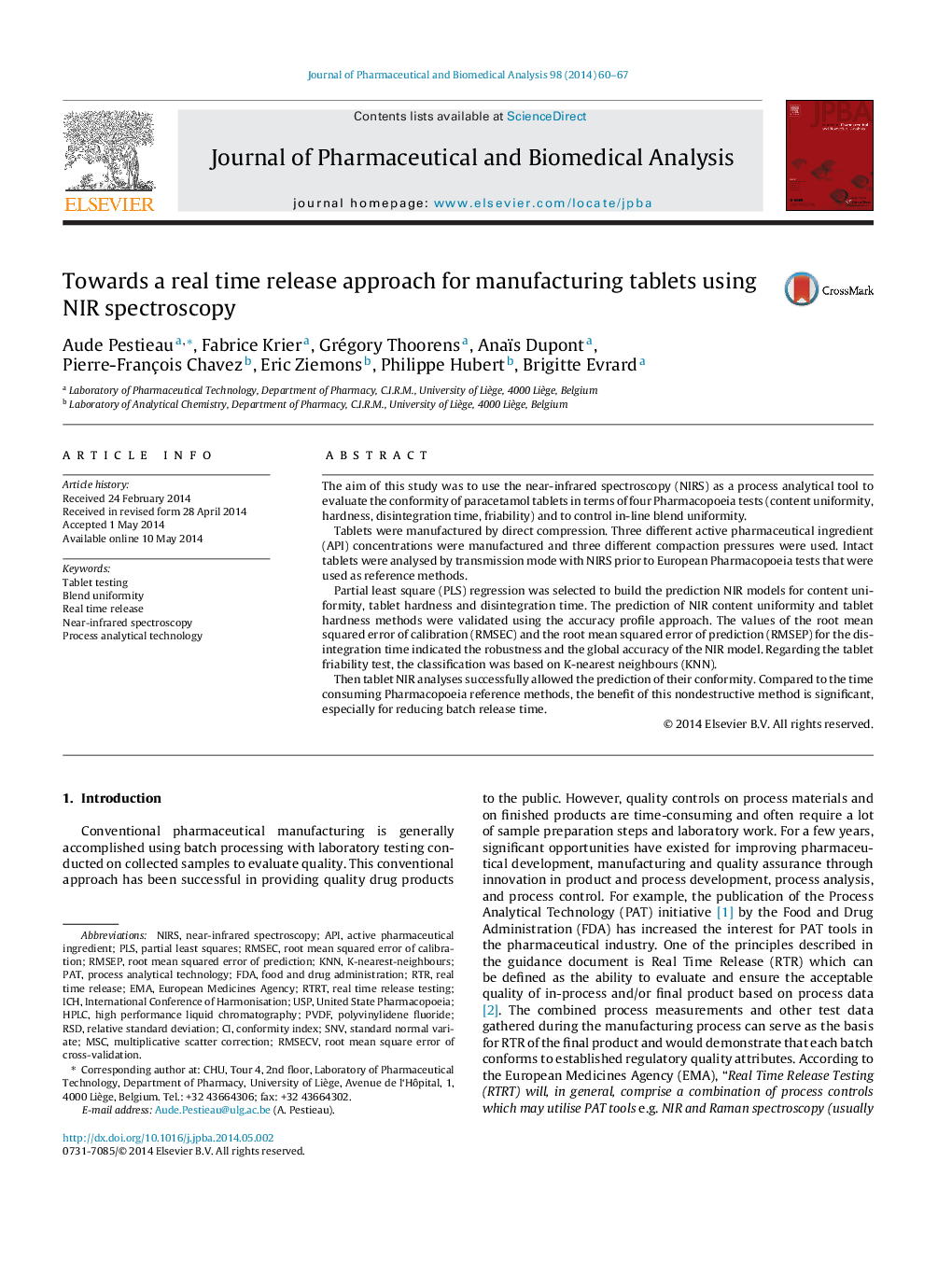| Article ID | Journal | Published Year | Pages | File Type |
|---|---|---|---|---|
| 1221093 | Journal of Pharmaceutical and Biomedical Analysis | 2014 | 8 Pages |
•We used NIR spectroscopy to control in-line blends uniformity.•We used NIR spectroscopy to evaluate the conformity of paracetamol tablets.•Mixing time of blend could be reduced because NIR showed when it was homogenous.•Tablet NIR analyses successfully allowed the prediction of their conformity.•The benefit of NIR methods is significant for reducing batch release time.
The aim of this study was to use the near-infrared spectroscopy (NIRS) as a process analytical tool to evaluate the conformity of paracetamol tablets in terms of four Pharmacopoeia tests (content uniformity, hardness, disintegration time, friability) and to control in-line blend uniformity.Tablets were manufactured by direct compression. Three different active pharmaceutical ingredient (API) concentrations were manufactured and three different compaction pressures were used. Intact tablets were analysed by transmission mode with NIRS prior to European Pharmacopoeia tests that were used as reference methods.Partial least square (PLS) regression was selected to build the prediction NIR models for content uniformity, tablet hardness and disintegration time. The prediction of NIR content uniformity and tablet hardness methods were validated using the accuracy profile approach. The values of the root mean squared error of calibration (RMSEC) and the root mean squared error of prediction (RMSEP) for the disintegration time indicated the robustness and the global accuracy of the NIR model. Regarding the tablet friability test, the classification was based on K-nearest neighbours (KNN).Then tablet NIR analyses successfully allowed the prediction of their conformity. Compared to the time consuming Pharmacopoeia reference methods, the benefit of this nondestructive method is significant, especially for reducing batch release time.
Graphical abstractFigure optionsDownload full-size imageDownload as PowerPoint slide
